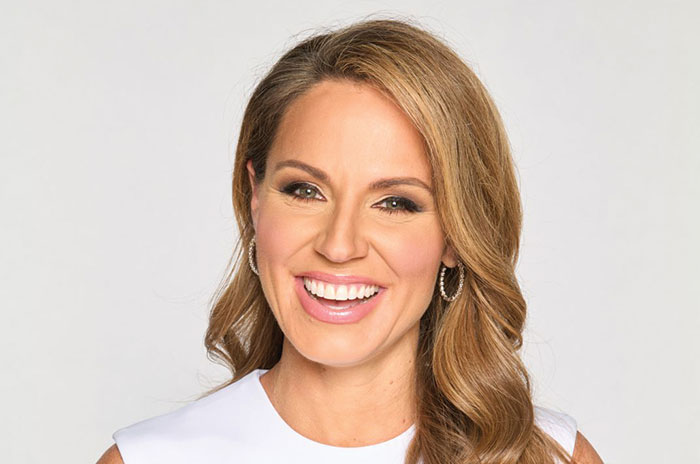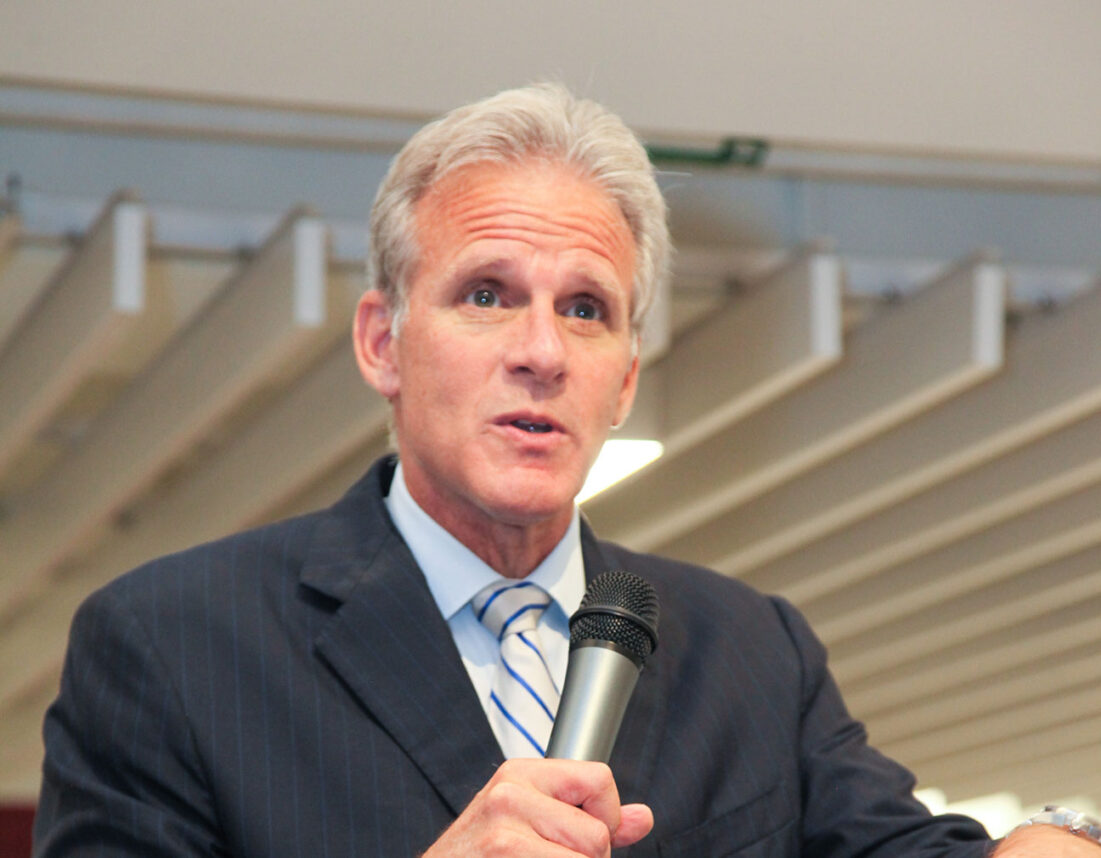It’s no secret that Conservative Judaism faces significant challenges, but officials within the movement hope an audit of close to 1,000 people by the branding firm Good Omen — expected to be released in the coming weeks — will help pump new life into it.
“We’re in the final stages of the audit and the information-gathering and we’re looking forward to seeing in the next couple of weeks their formal reports,” Rabbi Steven Wernick, CEO of United Synagogue of Conservative Judaism (USCJ), told the Journal during a recent interview at American Jewish University (AJU).
Good Omen staff have been asking Conservative Jews about their thoughts and feelings about the movement, and they have been helping USCJ, the movement’s synagogue umbrella organization, develop a fresh slogan — something to replace “Tradition and change.”
Wernick said USCJ has changed to respond to the needs of the 21st-century Jew, including changing its language to refer to the synagogue as a “kehilla” (community). Unfortunately, nobody else seems to recognize it has changed, he said.
“We hired a branding consultant because we felt, and the process has demonstrated for us, thus far, that the work we have done toward creating a new United Synagogue experience is not being fully recognized and trickling down into the congregations or into the Jews in the pews,” he said. “So we wanted to get some outside help in asking if our objectives are aligned with objectives communities are expecting from us and if not, where is the gap and if they are aligned, where might we need additional resources and how might we create strategies in order to that?”
In 2013, the Pew Research Center study, “A Portrait of Jewish Americans,” found that identification with Conservative Judaism is decreasing: 36 percent of those raised Conservative currently identify as such, compared with a 48 percent retention rate for Orthodox Jews and 55 percent for those raised Reform. This is happening even though the movement has liberalized over the years, permitting people to drive on Shabbat, use live instrumentation during worship services and more.
However, Wernick said the Pew report does not provide a complete picture of what is happening within the denomination.
“If you measure your success by impact as opposed to just feeling good about your Jewish identity [a core measurement of the Pew study], the impact of Conservative Jewry is extraordinarily high,” he said during a wide-ranging conversation with the Journal that lasted more than an hour.
Wernick did acknowledge that the findings of the Pew study underscore a serious problem facing the movement.
“The number of Jews that self-identify as Conservative has shrunk — that’s for sure — and critical mass is important, and there’s a lot more we can do to address that. Some of that has to do with synagogues making the transition from being a membership-focused organization to a meaning-focused organization.
“We have to double-down on our engagement of teens and we have to increase the overall Jewish learning and experience. It’s both affective and cognitive elements,” he said. “And so United Synagogue sees its role as helping communities, established communities, do that, helping affiliated synagogues grow their capacity, engage their teens and increase Jewish knowledge.”
That’s accomplished, Wernick said, through USCJ’s three pillars: synagogues, United Synagogue Youth and Conservative Yeshiva in Jerusalem, a co-educational environment for studying Jewish texts founded in 1995.
Giving Wernick hope is anecdotal evidence that a disproportionate number of Conservative Jews are going to Israel-related policy conferences. He said AIPAC leaders reported that 50 percent of attendees at the pro-Israel lobby’s events identify with the Conservative movement. And on the other side of the spectrum, Wernick said, 90 percent of participants at a J Street U event held last year at AJU grew up in the Conservative movement.
He said the Los Angeles Jewish community, in particular, gives him confidence, and he highlighted local rabbis Sharon Brous and Naomi Levy, who lead two of the country’s most prominent post-denominational communities, IKAR and Nashuva, respectively. Both were ordained in the Conservative movement, and while their current faith communities don’t identify with the denomination, having Conservative-ordained rabbis serving a large number of Jewish needs counts for something, Wernick said.
“It’s about impact,” he explained. “Look at how many Jews Sharon Brous has positively impacted. The congregation might not want to limit itself to a definition of a denomination, but Sharon Brous was trained as a Conservative rabbi. They use a siddur and Chumash from the Conservative movement … and she is committed to robust halachic practice. The methodology by which she teaches Talmud is by definition what she experienced and learned. So call it whatever you want, but Sharon Brous is a success story of Conservative Jewry.”
Wernick, father of three and son of Conservative Rabbi Eugene Wernick of Or Olam in New York City, said the deaths of his mother when he was 2 and his stepmother when he was 15 had a profound impact on him and his relationship with the Jewish world.
“[The] USY community supporting me at the time of loss, not only my friends but their parents … helped me through difficult times,” he said. “I believe, in many regards, I am a product of the mitzvah of kol yisrael arevim zeh bazeh, that all of Israel are responsible for one another, that Jews, when they take Jewish values seriously and implement them when they have an opportunity to do a mitzvah, they can change a life. I believe my life was changed by people who did that.”
During rabbinical school at AJU, then known as University of Judaism, and at the Jewish Theological Seminary in New York, Wernick studied under Conservative leaders including Rabbi David Wolpe, Rabbi Elliot Dorff and the late Rabbi Ben Zion Bergman, who designed the mikveh at AJU. He also was youth director at Congregation Beth Kodesh, which later merged with Temple Beth Ami to form Shomrei Torah Synagogue in West Hills. Before being hired at USCJ in 2009, he served as the spiritual leader in Adath Israel synagogue, near Philadelphia.
Wernick, 48, said he has found his current work overseeing nearly 600 synagogues and 1 million Jews challenging and stimulating. He helps with budgets and programming to help them increase their capacity and become stronger communities. His job responsibility, also, is telling the story of Conservative Judaism. And what is that story?
“The issues of Conservative Judaism are the issues of the world, and our tradition has a wisdom and a value structure of how we might approach them,” he said.
That means addressing the growing income gap between the wealthy and the poor, environmental destruction and more, he said.
Merrill Alpert, youth director of the Far West region of USY, which includes Los Angeles, expressed confidence in Wernick during a phone interview. She said he is “very, very committed to the youth and has gone out on a limb. … He publicly declared he wants to direct his concern, his emphasis, to the youth and is trying to engage more youth and get the synagogues to rally behind and be more supportive of their youth departments in the synagogue.”
Wernick, for his part, said he wants every denomination, not just Conservative Judaism, to thrive.
“When we all succeed, the entire Jewish world succeeds, so we should be wildly successful,” he said. “That’s my dream.”























 More news and opinions than at a Shabbat dinner, right in your inbox.
More news and opinions than at a Shabbat dinner, right in your inbox.